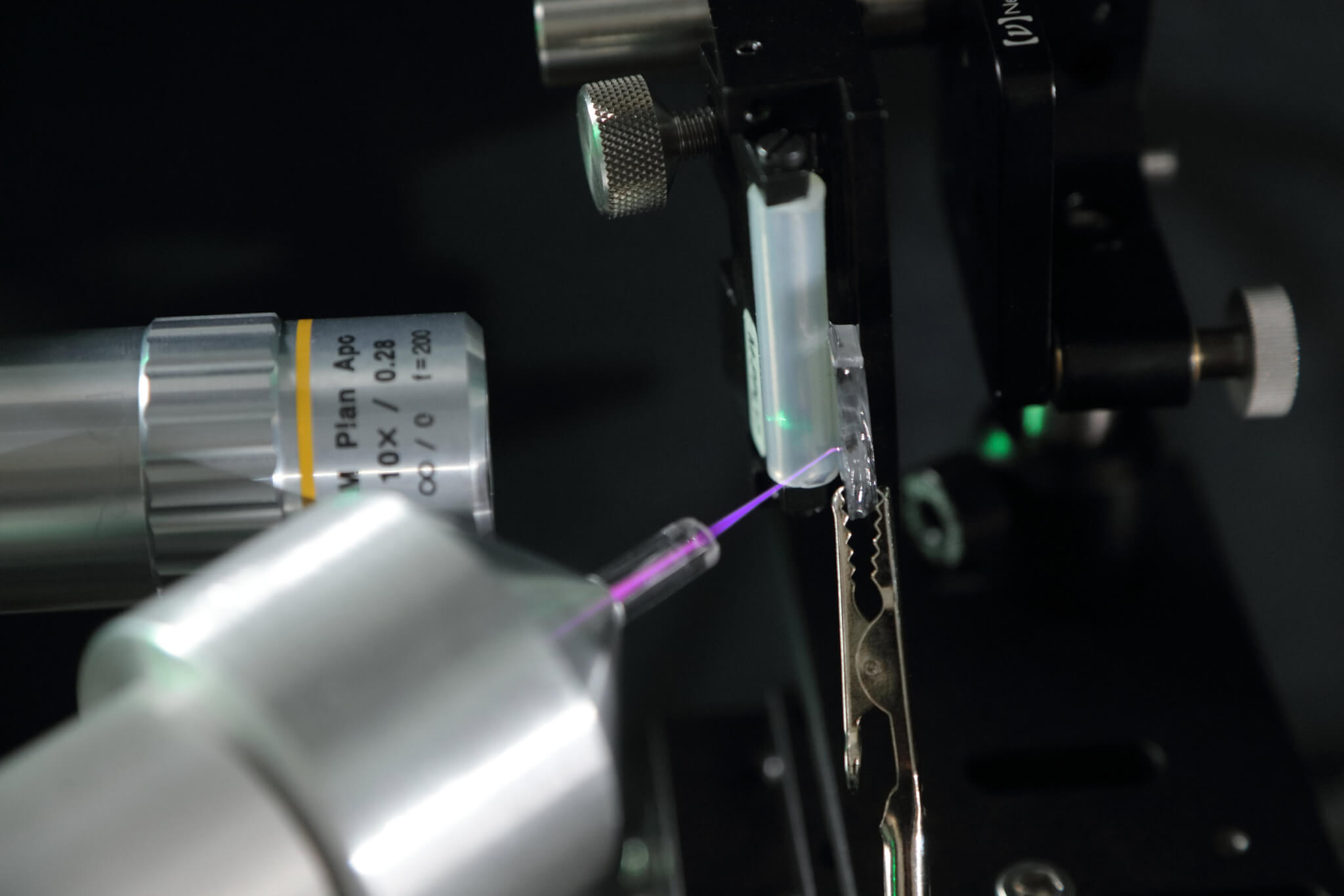
Doctoral candidates Sara Makarem Hoseini and Daniel Hirt observe the plasma ray setup. Though Hirt wears a knit cap and puffy jacket for effect, the cooling is localized and doesn’t have much influence on the surrounding room temperature. (CREDIT: Tom Cogill)
CHARLOTTESVILLE, Va. — Inspired by the fictional freeze-ray gun of Mr. Freeze from “Batman,” a University of Virginia professor may be on the brink of turning science fiction into reality. Patrick Hopkins, from the Department of Mechanical and Aerospace Engineering, believes he has stumbled upon a method to create a real-life freezing beam.
Unlike the villainous intentions of Mr. Freeze, Hopkins' intentions are solely for cooling the overheated electronics inside spacecraft and high-altitude jets.
“That’s the primary problem right now,” says Hopkins in a university release. “A lot of electronics on board heat up, but they have no way to cool down.”
This poses a significant issue, especially for the U.S. Air Force and Space Force, whose craft operate in space or high altitudes, where natural cooling mechanisms like dense air or water are unavailable.
Recognizing the potential, the U.S. Air Force granted the professor's ExSiTE Lab $750,000 to advance the technology. Following this research, Hopkins' UVA spinout company, Laser Thermal, will take on the task of crafting a prototype device.

How does it work?
Hopkins' discovery delves into the fourth state of matter: plasma. Contrary to its fiery nature, plasma has a unique property — it can cool surfaces before heating them. In their lab tests, the team found that when they used a plasma jet on a gold-plated surface, the area initially cooled down before getting hot. This baffling observation seemed to go against known scientific laws.
What’s responsible for this mysterious cooling effect? The evaporation of water molecules, similar to the chilling sensation one feels when water evaporates off the skin after a swim.
“Evaporation of water molecules on the body requires energy; it takes energy from body, and that’s why you feel cold,” notes Hopkins. “In this case, the plasma rips off the absorbed species, energy is released, and that’s what cools.”
In light of their findings, the team has begun refining the technology, using the Air Force grant to purchase their own equipment. Researchers have been exploring the potential of different gases, metals, and surface coatings.
“We haven’t really explored the use of different gasses yet, as we’re still working with helium,” says UVA doctoral candidate Daniel Hirt. “We have experimented so far with different metals, such as gold and copper, and semiconductors, and each material offers its own playground for investigating how plasma interacts with their different properties.”
The study is published in the journal ACS Nano.










